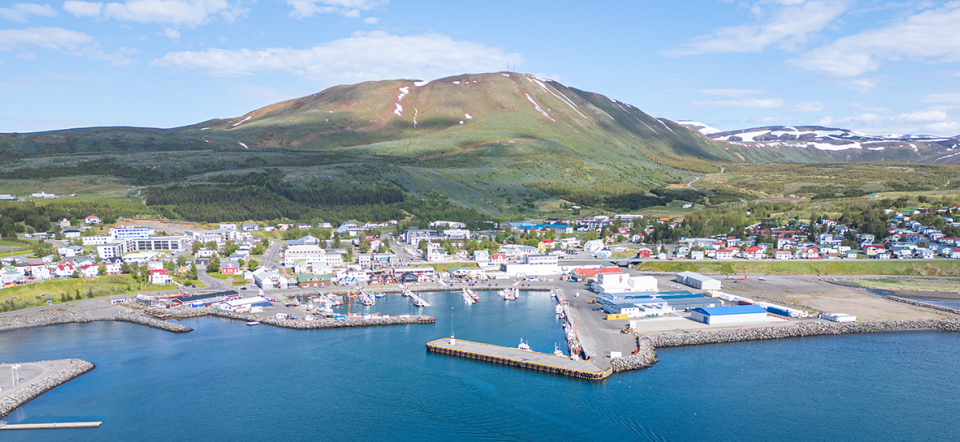Remote labour markets in the Nordic countries are usually smaller and less diverse than their urban counterparts, making them more vulnerable to external developments. The accelerated pace of change brought about by global megatrends poses both risks and opportunities.
For instance, aging populations in these areas can result in labour shortages, while technological advancements and the rise of remote work may offer new possibilities for economic sustainability.
The research project Sustainable Remote Nordic Labour Markets (SUNREM), with researchers from Iceland, Norway, Sweden and Åland, is at the forefront of understanding these transformations.
The SUNREM project is conducting case studies in seven distinct remote locations across the Nordic region: Dalvík and Húsavík in Iceland, Skellefteå and Gotland in Sweden, Stord and Hammerfest in Norway, and the Åland Islands. These areas were selected for their unique characteristics and their varying degrees of exposure to global megatrends, particularly the green transition.
What is sustainable labour participation?
The SUNREM project combines quantitative and qualitative methods to gain a comprehensive understanding of local labour market dynamics. Researchers are collecting data on regional and national levels to identify trends and impacts, while interviews and co-creative methods in case study regions provide insights into local conditions.
“We started by exploring the literature to get a better understanding of how sustainable labour market participation is described and anlysed in the academic literature,” explains Anna Lundgren, leader of the SUNREM project. “The definition of sustainable labour market participation that we use in the project consists of three basic elements. The first element is the balance between job supply and job demand. The second is ensuring decent job quality. The third is creating a labour market that remains stable and adaptable in the future.”
Contrasting responses to global megatrends
Although the project is ongoing, some early findings have emerged. In Iceland, for example, the municipalities of Dalvíkurbyggð and Norðurþing illustrate contrasting responses to global megatrends, explains Hjalti Johannesson from the University of Akureyri Research Centre on Iceland:
“Dalvíkurbyggð relies heavily on technologically advanced fisheries, while Norðurþing benefits from its geothermal resources, supporting industries like tourism and manufacturing. Both, however, face challenges integrating foreign labour into their communities.”
“Foreign labour is a common thread in many of our case studies,” his colleague Gretar Thor Eythorsson notes. “In some areas, industries like tourism and fisheries rely heavily on temporary or migrant workers, which presents both opportunities and integration challenges. In addition, we can probably say that global warming is a more significant factor in the tourist-dependent Norðurþing, while technological changes play a more central role in the fisheries of Dalvíkurbyggð. So it's different from case to case.”

The Nordic advantage
The Nordic model of collaboration is a cornerstone of SUNREM’s approach. By bringing together researchers and stakeholders from different countries, the project leverages local expertise to provide nuanced understandings.
“This type of Nordic co-operation is incredibly beneficial,” says Anna Lundgren. “It helps us understand the context on the ground and fosters the sharing of knowledge and best practices across borders.”
The Nordic region’s commitment to sustainability and innovation also positions it uniquely to address these challenges. The researchers have seen, for example, that remote work increasingly is seen as a viable solution for addressing labour shortages in isolated areas. Hjalti Johannesson explains:
“To adapt to this broader trend of remote work, in Húsavík (Norðurþing municipality) there have been established co-working spaces to support remote workers. People can hire a desk and have a proper working place, even if they're working for different individual institutions. It will be interesting to follow these developments to see the long-term effects of the Nordic labour markets.”
Implications for policymakers
One of SUNREM’s key objectives is to inform policy makers. The project aims to produce actionable recommendations to enhance sustainable labour market participation in remote areas.
“We hope our research will provide valuable learnings for policymakers,” says Anna Lundgren. “By identifying best practices and understanding the unique challenges of each region, we can help shape strategies that promote resilience and sustainability.” This research is particularly relevant as Nordic policymakers grapple with balancing economic development and environmental sustainability. Regions that are dependent on fossil fuels must transition to greener industries, while ensuring that the labour market remains robust and inclusive. As the SUNREM project progresses, their findings can contribute to offer solutions to a roadmap for navigating such complexities of the 21st-century labour market.






